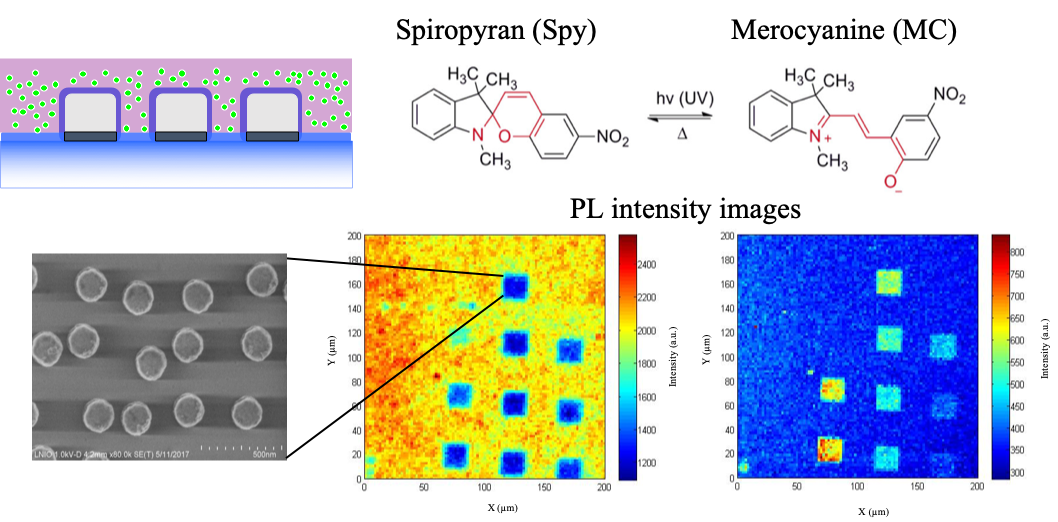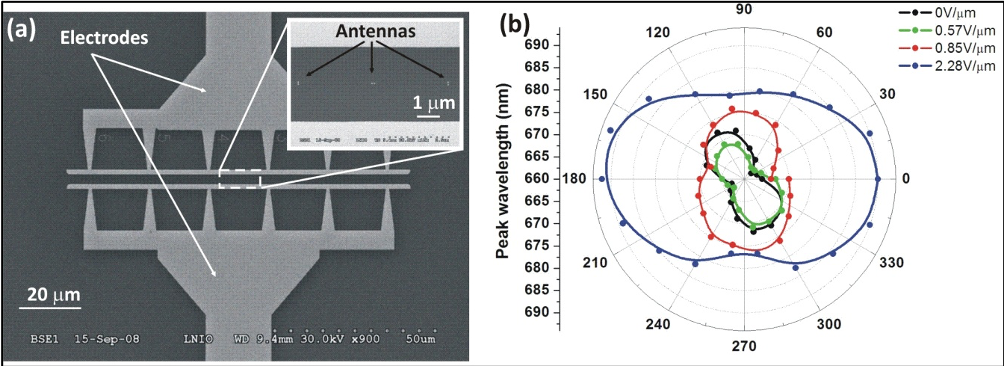In the same section
- Home
- Units
- Light, nanomaterials, nanotechnologies (L2n - CNRS-UMR 7076)
- Research topics
- Light-Matter interactions at the nanoscale
Active Plasmonics
Leader Scientist: Anne-Laure Baudrion (Assistant Pr.)
Summary
Active plasmonics is a burgeoning and challenging subfield of Plasmonics. It exploits the reversible active control of surface plasmon resonance by an external stimulus.Photochromic materials
The current project concerns the control of quantum dots (QDs) photoluminescence by the use of metallic nanoparticles (NPs) and active materials. The coupling between QDs and NPs can lead to the enhancement or to the quenching of their photoluminescence depending on the spectral overlap between the Localized Surface Plasmon Resonance (LSPR) and the QD emission [1]. A shift of about 20 nm in the LSPR is enough to change from quenching to enhancement. The main research topic here is to find a way to modify the LSPR without changing the nanoparticles properties (geometry, material, position…).Photochromic molecules (PM) are good candidates for this purpose as they can go from a transparent state to a colored one through the absorption of UV light. This transition is accompanied by a high change in the refractive index of the organic material (up to 0.25 for spiropyran molecules). Moreover, this transition is reversible, and this can be achieved either by absorption of visible light or by a heating process. Therefore, we covered silver NPs with a mixture of PM and QDs and studied the photoluminescence by Fluorescence Lifetime Imaging Microscopy (FLIM). This technique allows to image both the intensity and the lifetime of the QD photoluminescence. We proved an active optical control of the photoluminescence emitted by a QD-NP coupled system and we were able to optically switch from quenching to enhancement of the photoluminescence [2] (see. Figure below).The goal of future works is to go further in this study by improving the 3-entities-system to achieve a better optical switch (improving of the ON/OFF contrast with photochromic molecules. Different QDs and NPs will be used to study the influence of the spectral overlaps of absorption, emission and LSPR bands.

Electrochromic materials
In 2009, we demonstrated an active control over individual antenna performances by an external electrical trigger. We found that by an in-plane command of an anisotropic load medium, the electromagnetic interaction between individual elements constituting an optical antenna can be controlled, resulting in a strong polarization and tuning response [3].
New developments of this technique involving quantum dots are under progress.

Related publications
[1] Viste, P., Plain, J., Jaffiol, R., Vial, A., Adam, P.-M., & Royer, P. (2010). Enhancement and Quenching Regimes in Metal− Semiconductor Hybrid Optical Nanosources. ACS Nano, 4(2), 759–764.
[2] Lamri, G., Movsesyan, A., Figueiras, E., Nieder, J. B., Aubard, J., Adam, P.-M., et al. (2019). Photochromic control of a plasmon–quantum dots coupled system. Nanoscale, 32(1), 1043–8.
[3] Berthelot, J., Bouhelier, A., Huang, C., Margueritat, J., Colas des Francs, G., Finot, E., et al. (2009). Tuning of an optical dimer nanoantenna by electrically controlling its load impedance. Nano Letters, 9(11), 3914–3921.
[4] Lamri, G., Veltri, A., Aubard, J., Adam, P.-M., Félidj, N., & Baudrion, A.-L. (2018). Polarization-dependent strong coupling between silver nanorods and photochromic molecules. Beilstein Journal of Nanotechnology, 9(1), 2657–2664.
[5] Baudrion, A.-L., Perron, A., Veltri, A., Bouhelier, A., Adam, P.-M., & Bachelot, R. (2013). Reversible Strong Coupling in Silver Nanoparticle Arrays Using Photochromic Molecules. Nano Letters, 13(1), 282–286.
Date of update 09 January 2023
Contact
Collaborations
- Nordin Felidj & Jean Aubard, ITODYS, Paris
- Alexandre Bouhelier, ICB, Dijon
- Jana Nieder, INL, Braga, Portugal
- Alessandro Veltri, Universidad San Francisco de Quito, Ecuador


